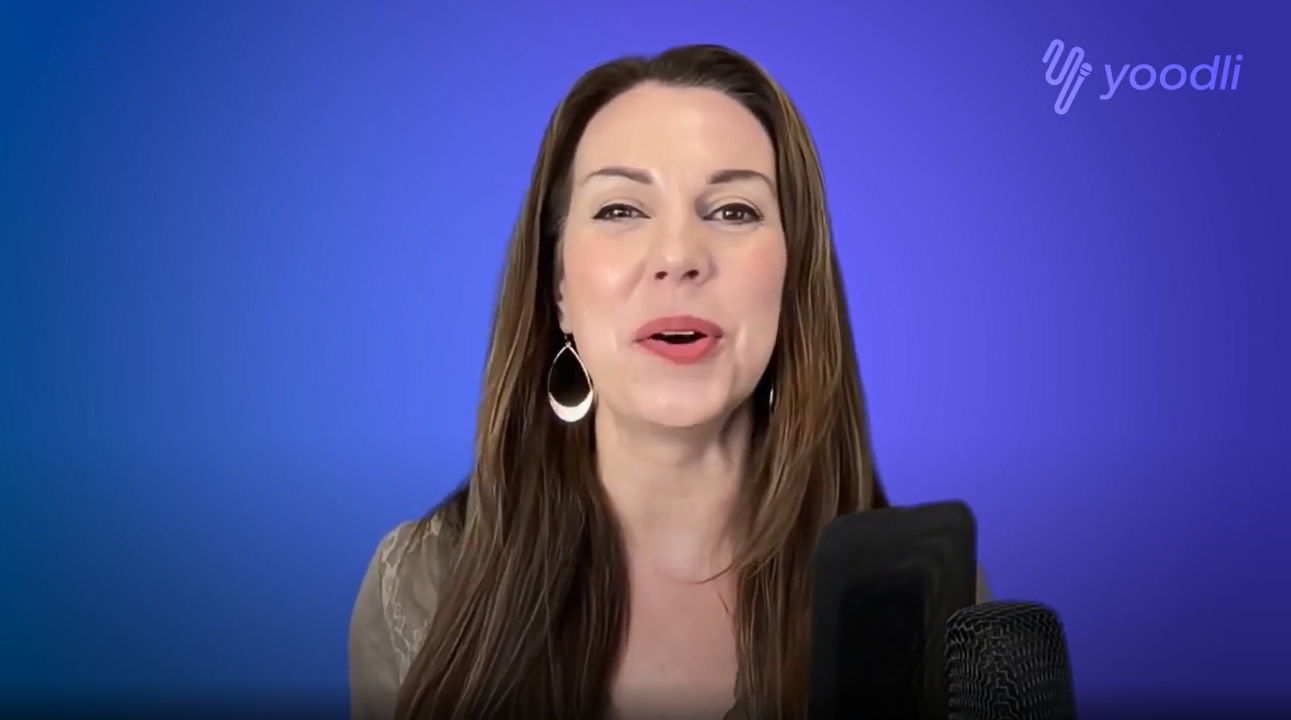How To Not Sound Monotonic
January 3, 2023
•
4 min read

A monotonic voice is one that lacks variation in pitch or tone, and can be perceived as lacking enthusiasm or interest, and may make it more difficult for listeners to stay engaged.
In this blog post, we will explore some tips and techniques for adding variety to your voice and avoiding a monotone voice when speaking. Whether you are giving a presentation, hosting a podcast, or simply having a conversation, these strategies can help you capture and hold your audience’s attention. We’ll also include a vocal warm up that you can try to vary your pitch and avoid sounding monotonic.
How To Tell If You Sound Monotonic
Monotonic voices have a very narrow range of pitch and sound pretty even. If your general day-to-day dialogue has little pitch variation – regardless of the story or dialogue that you’re trying to tell, then you likely are speaking in a monotone voice.
When you’re presenting or giving a speech, using a monotonic voice throughout can cause the audience to become disengaged.
On the other hand, varying your pitch, incorporating pauses, having a smile on your face, and speaking with emotion are key factors in enhancing your delivery.
Sounding monotonic can be caused by several factors such as:
Lack of emotion in the voice
Emotions can tell a whole story by themselves. They reveal the state of mind that an individual is in. Monotonic speakers can come across as flat and disinterested in their speech, which can lead to a disengaged audience.
One way to improve a monotonic voice is to practice tonal drills. Here’s an example of a drill that can add various pitch and tone to your voice:
Distracted or thinking about other things
When you’re not present during your speech and are thinking about other things, your pitch can come across as monotonic. Be mindful and engaged with the words you’re using and the way in which you’re delivering your content. Some of the best speakers have an uncanny ability to stay in the moment during their presentations.
Feeling nervous
Feeling nervous is a natural emotional response to the unknown. However, there are several ways to deal with nervousness so that you’re as prepared as you can be on your presentation day:
- Prepare and practice your presentation ahead of time. Yoodli’s free AI speech coach is a great way to practice your speech in a judgment-free way.
- Keep the focus on your audience. Remember that it’s not about you.
- Deliver a message that is important to both you and the audience.
Monotone Voice: Tips To Improve Your Vocal Tonality
There are several ways to improve a monotone voice and add variety to your speech such as:
Pay attention to your breath and take pauses
Proper breathing can support the natural pitch and intonation of your voice. Make sure you are taking deep breaths and exhaling fully to support your speaking. This practice can be accompanied by making good use of pauses. Pauses allow your audience to visualize and reflect on what has been said.
Yoodli’s feedback tool analyzes your pauses and gives you recommendations on how you can improve. Here’s a look at the delivery analytics for a speech that incorporates pauses really well. You can see that a couple of the pauses are even longer than four seconds:

Vary your pitch
One way to add variety to a monotonous speech is to vary the pitch of your voice. Try speaking in a deeper or higher pitch to add interest to your delivery. Another technique is to use inflection to emphasize certain words or phrases. Before giving your speech, identify the key points that you want to emphasize and use a higher or lower pitch to make them stand out from the rest of the speech.
Incorporate deliberate body language to connect with the audience
They say that the eyes are the windows to the soul. When you make eye contact with the audience, you’re conveying the message that you’re present, engaged and interested in what you’re saying. That interest will carry over to the audience as well and help them remember your message more.
Add in a few smiles and you’ve got yourself a recipe for success!
Here’s an example from a speech that Yoodli’s feedback tool analyzed that incorporates strong eye contact and smiles throughout the speech:

Practice speaking with emotion
Incorporating emotions in your voice captures the attention of the audience. Take a look at this famous speech given by President Barack Obama in 2004. You can see that throughout the speech, he varies his pace and tone for emphasis and to evoke an emotional and powerful response from the audience which is what made this speech so memorable and famous:
Fix A Monotonic Voice With Yoodli’s Feedback Tool
A speech coach can help you identify any underlying physical or vocal issues that may be contributing to your monotone voice and can provide you with specific exercises and techniques to improve your pitch and intonation.
For a judgment-free way to practice, try out Yoodli. Yoodli is a free AI speech coach that utilizes artificial intelligence to help you improve your communication abilities. The feedback tool can analyze your word choice for:
- Repetition
- Filler Words
- Non Inclusive Words
- Top Keywords
- Weak Words
The feedback tool can also analyze your delivery for:
- Eye Contact
- Centering
- Pauses
- Smiles
- Pacing
Sign up for free today and never worry about speaking in a monotone voice again.
Start practicing with Yoodli.
Getting better at speaking is getting easier. Record or upload a speech and let our AI Speech Coach analyze your speaking and give you feedback.